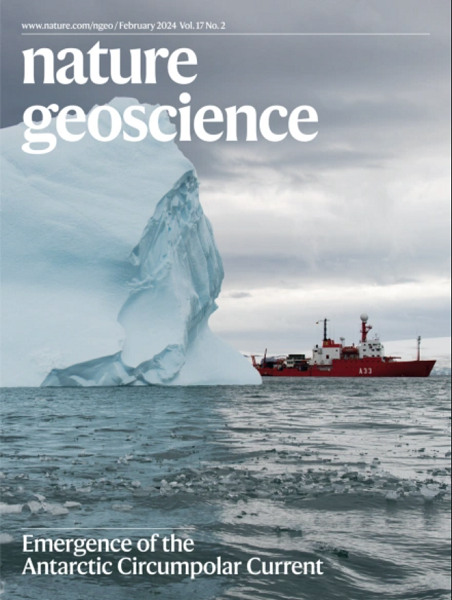火灾后植被生产力恢复的空间异质性及其驱动因素
IF 15.7
1区 地球科学
Q1 GEOSCIENCES, MULTIDISCIPLINARY
引用次数: 0
摘要
对火灾后植被生产力恢复的全球分析表明,不同植被类型和地区的恢复时间存在空间差异。在全球大部分烧毁地区,影响恢复时间的主要因素是火灾后的气候条件,如土壤湿度、蒸汽压力不足和气温。本文章由计算机程序翻译,如有差异,请以英文原文为准。


Spatial heterogeneity in post-fire vegetation productivity recovery and its drivers
A global analysis of post-fire vegetation productivity recovery reveals that the recovery time shows spatial variations across vegetation types and regions. The dominant factors that influence the recovery time in the majority of the global burned area are the post-fire climate conditions, such as soil moisture, vapour pressure deficit and air temperature.
求助全文
通过发布文献求助,成功后即可免费获取论文全文。
去求助
来源期刊

Nature Geoscience
地学-地球科学综合
CiteScore
26.70
自引率
1.60%
发文量
187
审稿时长
3.3 months
期刊介绍:
Nature Geoscience is a monthly interdisciplinary journal that gathers top-tier research spanning Earth Sciences and related fields.
The journal covers all geoscience disciplines, including fieldwork, modeling, and theoretical studies.
Topics include atmospheric science, biogeochemistry, climate science, geobiology, geochemistry, geoinformatics, remote sensing, geology, geomagnetism, paleomagnetism, geomorphology, geophysics, glaciology, hydrology, limnology, mineralogy, oceanography, paleontology, paleoclimatology, paleoceanography, petrology, planetary science, seismology, space physics, tectonics, and volcanology.
Nature Geoscience upholds its commitment to publishing significant, high-quality Earth Sciences research through fair, rapid, and rigorous peer review, overseen by a team of full-time professional editors.
 求助内容:
求助内容: 应助结果提醒方式:
应助结果提醒方式:


